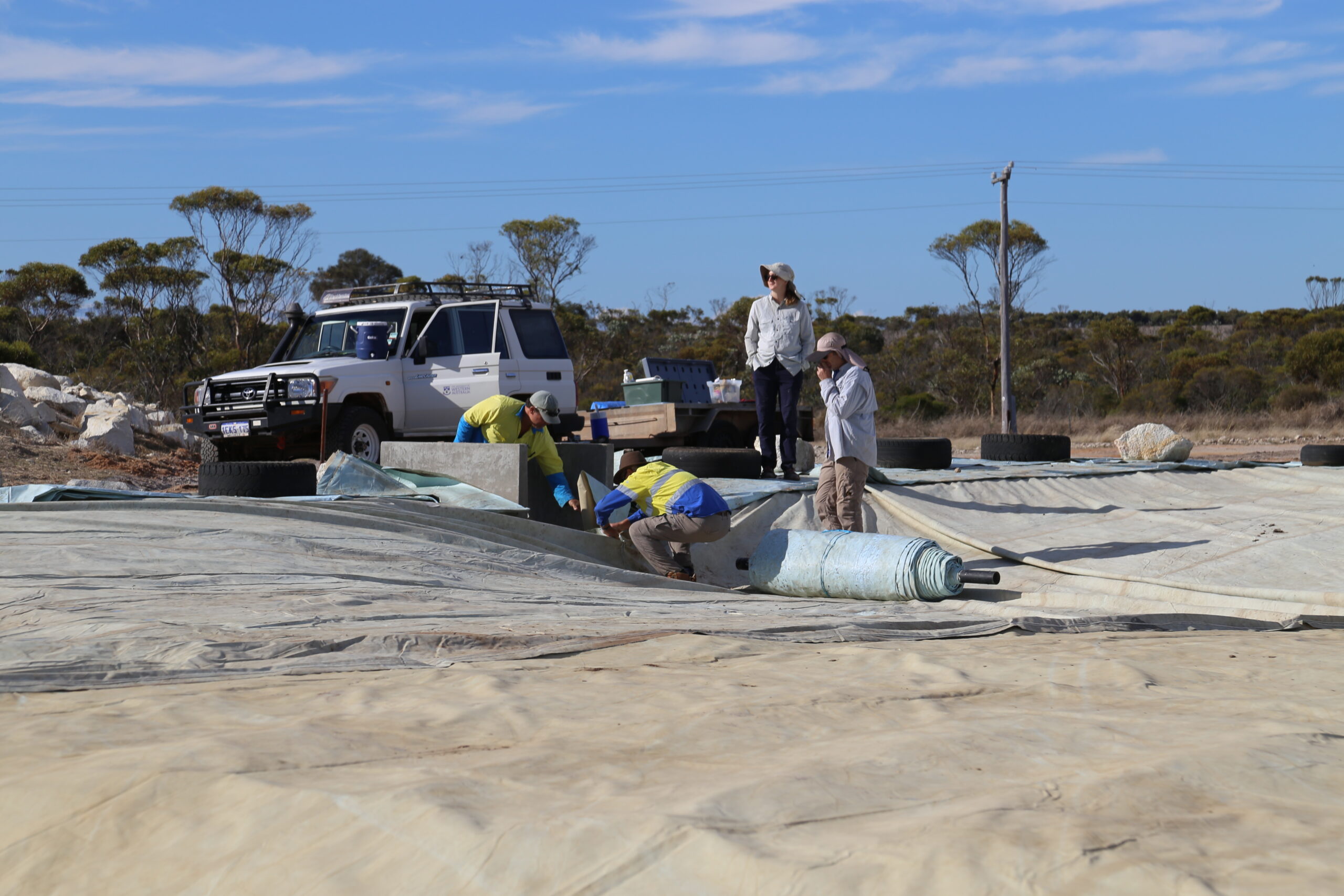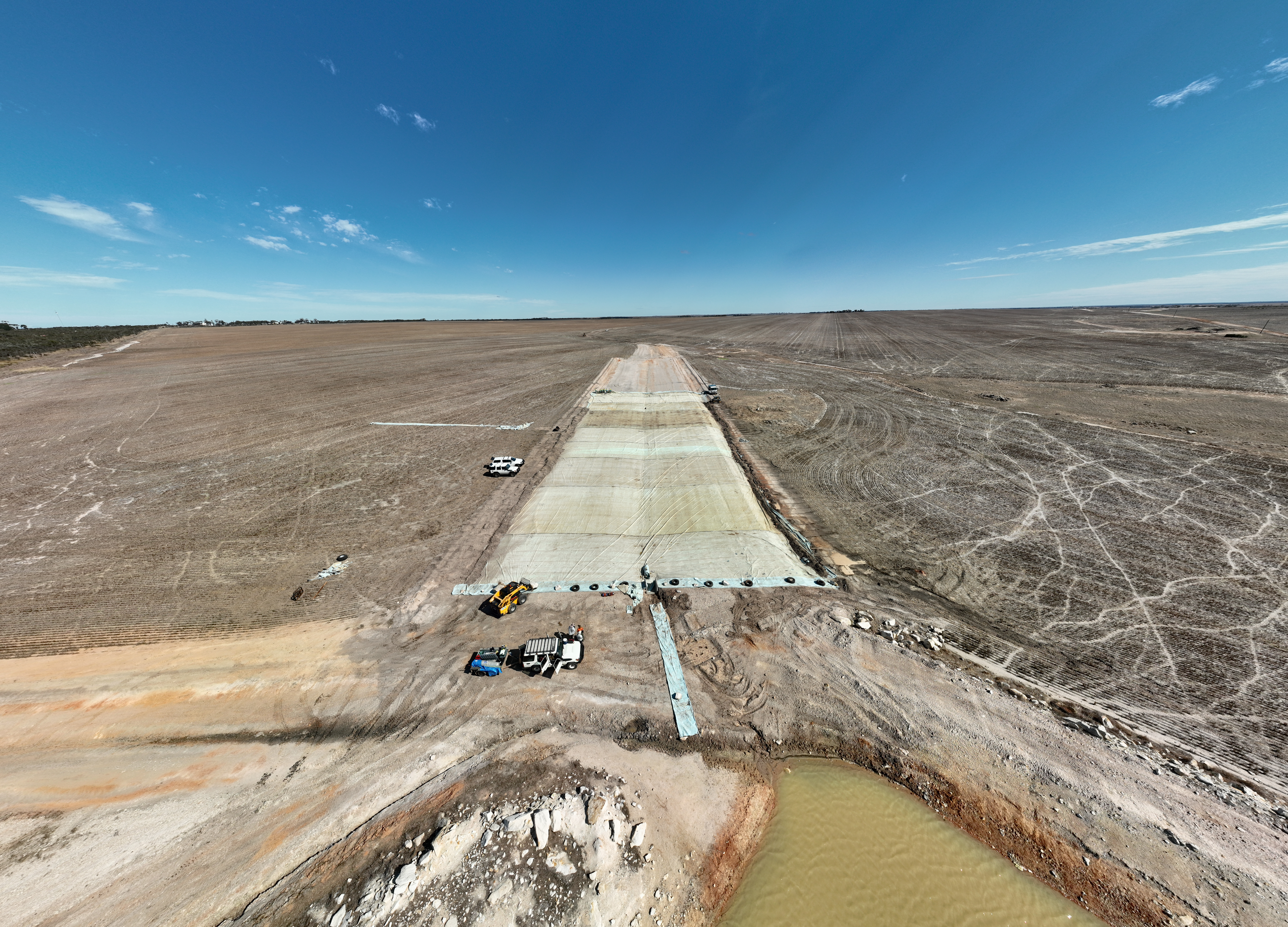WaterSmart Dams
#SmartDams Champions leading the way in making dams work again for their communities
Watersmart Dams project partner, Fitzgerald Biosphere Group (FBG) has connected with Jacup grower Mark Lester as a #SmartDams Champion for the project. Mr Lester was already working with the Department of Water and Environmental Regulation (DWER) on improvements and trialling water security innovations at a Strategic Community Water Supply (SCWS) dam residing on his farm.
Jointly funded by the Australian Government’s Future Drought Fund (FDF) and DPIRD, the entire WaterSmart Dams project team has been working alongside grower groups and local #SmartDams Champions in southwest WA to research and implement technology and engineering solutions to make dams work again and improve drought resilience across 12 demonstration sites.
GGA Project Manager Daniel Kidd said having the Smart Dam Champions host the water supply and quality demonstration sites was integral to the adoption of solutions among the wider grower community.
“Grower led learning gives growers greater confidence to adopt new dam designs, infrastructure and technologies if they can see their local peers successfully implementing them on-farm,” he said.
Mark Lester’s site is one of the first sites to be implemented and focusses on water catchment efficiency – identified as a high priority for growers who completed a key survey for the WaterSmart Dams project late last year.
Caption: The Jacup Community Dam paddock-scale trial. Image courtesy of UWA’s Centre for Water and Spatial Sciences (CWSS)
In 2022, on the back of the dry run experienced in 2018-2020 and their work in the Shire of Jerramungup, DWER approached Mr Lester looking to trial second hand CBH tarpaulins on catchments at the SCWS site.
Initial funding, from a portion of the WA Government’s $3.7M program to expand and enhance off-farm strategic dams, was directed through DWER to establish the site.
FBG Executive Officer Maddy Wylie said the experiment bode well as a demonstration site for the project as it was of interest to local farmers, where capturing every drop of water from catchments was of critical importance in successive dry seasons.
“This site is used as a public access point for emergency livestock water supply, and fire-fighting purposes,” she said.
“So, it is crucial that this water source remains reliable in the face of climate challenges.”
“Practical solutions using what is on hand is of interest to local growers.”
“Using second hand materials is often spoken of, but not many growers have taken the plunge.”
“The WaterSmart Dams project de-risks this for local farmers and aims to give good tools on workable solutions,” she said.
Mr Lester said it was something that he was interested in trialing but would not have had the time to implement without the involvement of DWER and the WaterSmart Dams project team.
“I am very interested to see how long the second hand plastic works as a catchment lining option, and looking at the logger data to see what is actually running off the catchment,” Mr Lester said.

Caption: The UWA and DWER team working on establishing the site. Image courtesy of UWA’s Centre for Water and Spatial Sciences (CWSS)
Project technical lead Associate Professor Dr Nik Callow said implementing water supply infrastructure that helped growers adapt to the hotter drier seasons was a strong motivation of the project team.
“Developing the infrastructure with the grower groups and the growers ensures the solution is capturing the specific needs of the community and district,” Dr Callow said.
“The WaterSmart Dams project is an example of universities conducting research that is translated into a project which people can interact with and adopt into their on-farm water infrastructure practices,” he said.
Other engineering solutions being demonstrated by the Smart Dams Champions include improved dam design and maintenance of roaded catchments, dam covers, silt traps, and technological innovations to improve water quality. They can viewed in the project’s Technology Gallery.

